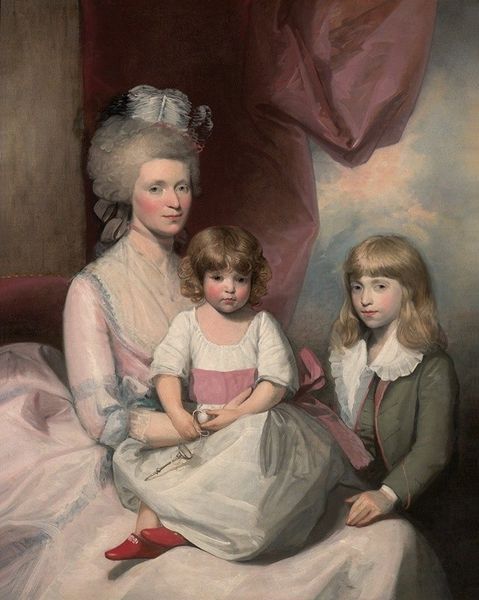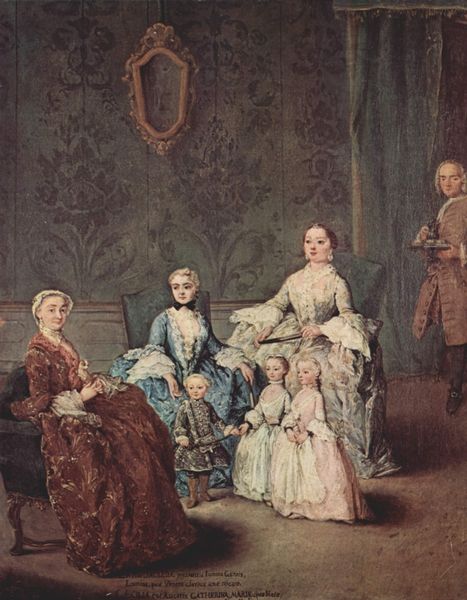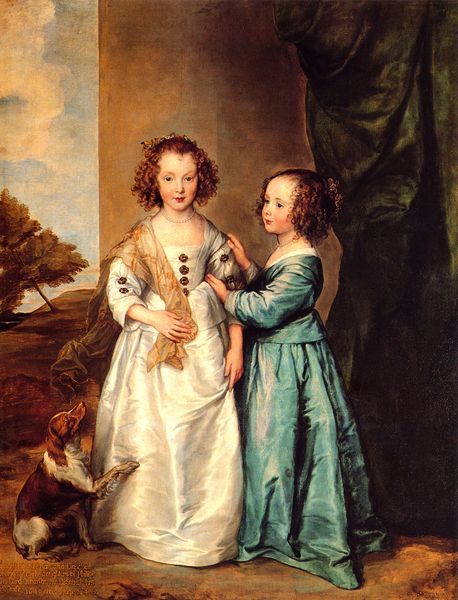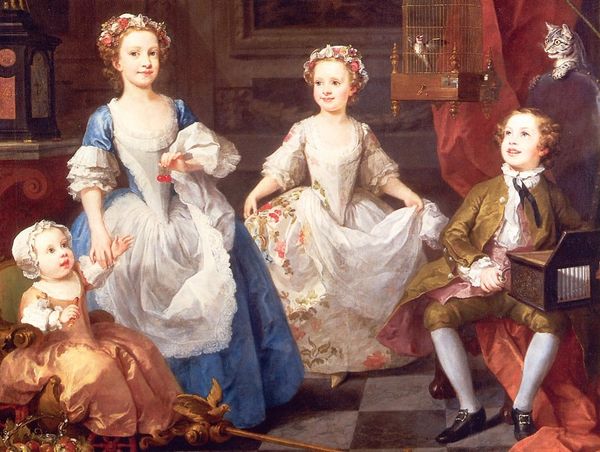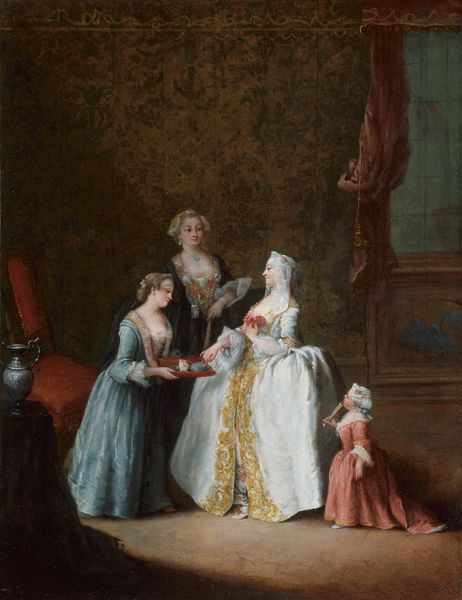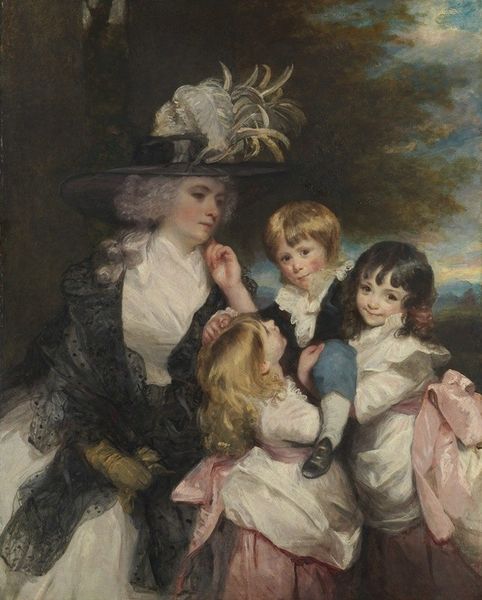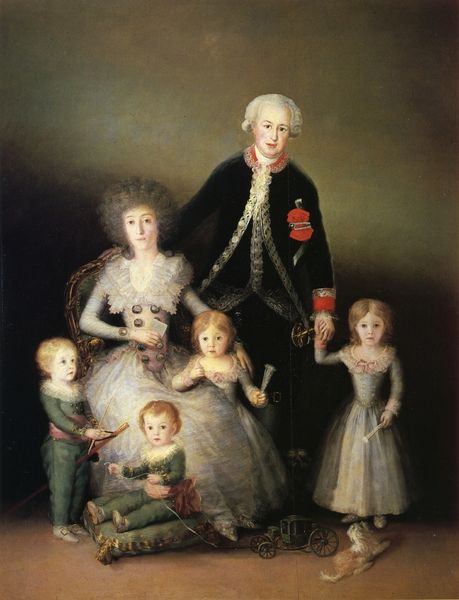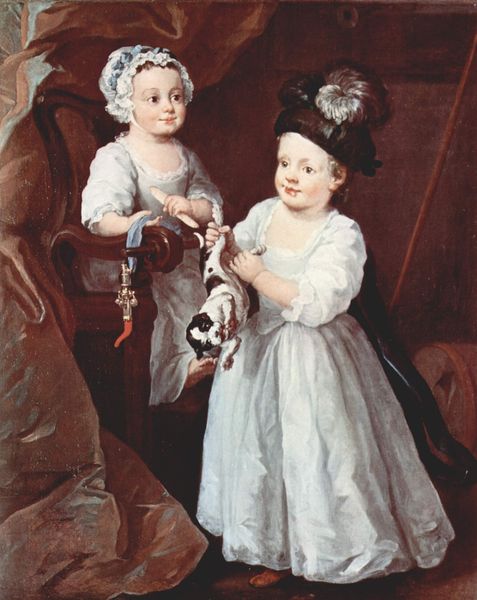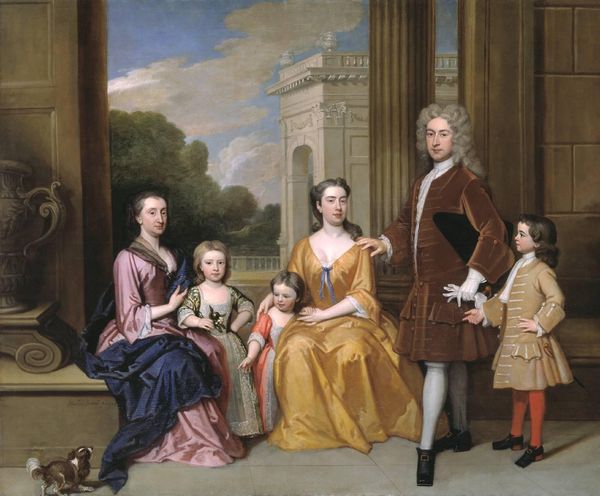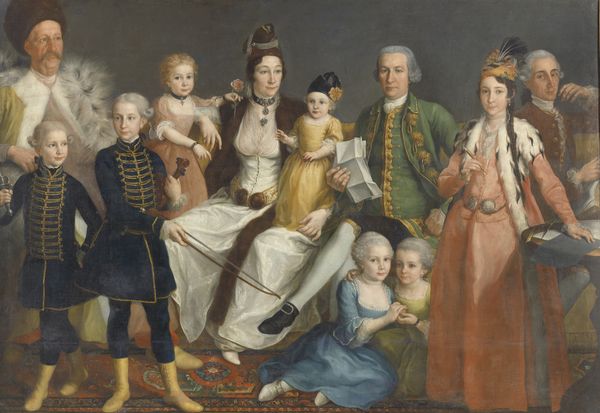
painting, oil-paint, oil-on-canvas
#
portrait
#
baroque
#
painting
#
oil-paint
#
group-portraits
#
oil-on-canvas
Dimensions: 43 1/16 x 34 1/4 in. (109.38 x 87 cm) (canvas)44 x 44 in. (111.76 x 111.76 cm) (outer frame)
Copyright: Public Domain
Curator: This oil-on-canvas piece, currently housed at the Minneapolis Institute of Art, is entitled "Portrait of Sir Edward Walpole's Children." Stephen Slaughter painted it in 1747. What are your first impressions? Editor: Honestly? Slightly unsettling. It's the kind of sweetness that verges on eerie. The expressions are just a touch too placid, and there’s a bird that looks like it's seen a ghost. What about you? Curator: I’m interested in that bird, actually! Notice its perch upon the eldest daughter's hand, as well as the small basket of fruit offered by the youngest. These objects, commonly understood as representing paradise or wealth, may symbolize hope and the bounty of youth in this period. It is as much about their station in life as it is their status within the family, and by extension, society. Editor: Absolutely. The symbolism feels so deliberate, so posed. But there's something vulnerable, too, in the way they’re grouped together. The Baroque formality, the rich fabrics – they’re a buffer, maybe, against an unknown future. Like these carefully chosen tokens may protect them forever. Curator: I agree that these trappings reflect a specific historical mindset, indicative of a family in a privileged position within the aristocracy. How are the family’s legacy and history constructed, even in an ostensibly candid group portrait of children? What message is being transmitted to future generations through this formal setting? Editor: And even though the setting is rigid, the individual details humanize them, even after hundreds of years. Look at the folds of their clothes, or the soft hair. You begin to think about what happens next in their lives, what are they really like, the moments that nobody documented at all? Curator: I think the painting succeeds because it transcends simple portraiture. It invites us to consider childhood, lineage, status, mortality… quite powerful messages delivered by four young people. Editor: Exactly! A still moment holding a torrent of information. It reminds me that everyone is made up of all their history. A past moment in their family that influences the ones yet to come.
Comments
minneapolisinstituteofart almost 2 years ago
⋮
The painting represents the four children of Sir Edward Walpole, all of whom can be easily recognized according to their ages. Laura, the eldest, married in 1758 the Hon. F. Keppel, Bishop of Exeter. Maria, the second, married in 1759 James, second Earl Waldegrave, and in 1766 the Duke of Gloucester (1736-1807). Charlotte married in 1760 Lionel, fifth Earl of Dysart (1738-1789). The boy, Edward, who became Colonel Walpole, died unmarried, aged thirty-one, in 1771. The bird in the painting is a Cuban Amazon parrot, either imported, or the artist may have copied it from a book.
Join the conversation
Join millions of artists and users on Artera today and experience the ultimate creative platform.
